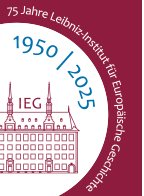Park, Jeung Keun
Göttingen: Vandenhoeck & Ruprecht, 2018
ISBN: 978-3-525-57088-3
DOI: 10.13109/9783666570889
Johann Arndts Paradiesgärtlein
Eine Untersuchung zu Entstehung, Quellen, Rezeption und Wirkung
Veröffentlichungen des Instituts für Europäische Geschichte, Mainz, 248: Abt. Abendländische ReligionsgeschichteGöttingen: Vandenhoeck & Ruprecht, 2018
ISBN: 978-3-525-57088-3
DOI: 10.13109/9783666570889

Arndt fügte zu Luthers Verständnis des Glaubens die bernhardinische Frömmigkeit und Mystik hinzu, während Augustinus bei ihm zur Autorität der Rechtgläubigkeit gehörte. Durch die Rezeption der spätmittelalterlichen und bernhardinischen Quellen kam Arndt zum lebendigen Glauben und schuf ein Gebetbuch voller Widersprüche, in dem das Solus Christus, sola gratia et sola scriptura der Reformation ebenso aufgenommen ist wie die mystische praesentia Dei et Christi in der Seele der Glaubenden. Park illustriert diese Gegensätze, die dennoch eine gemeinsame Mitte haben, nämlich die Betrachtung des Gekreuzigten: »Jch sehe an mit gleubigen Augen den gecreutzigten Jesum«.
Johann Arndt (1555-1621) worked on piety during the early modern period in Germany and exerted a decisive influence on pietism. However, today's Arndt and pietism research proves to be a controversial field, that has not sufficiently considered Arndt's prayer book "Garden of Paradise" (Paradiesgärtlein).
At the center of an assessment of Arndt and his position in Lutheranism is his reception of medieval-mystical and extra-Reformation sources, whose thoughts Arndt allowed to flow into the Protestantism of the 17th Century. Influences on the "True Christianity" (Wahres Christentum, 1605-1610) are Johann Tauler, Theologia Germanica, Angela of Foligno, The Imitation of Christ, Valentin Weigel and Paracelsus and above all the materials of the (pseudo-) Bernard of Clairvaux on the "Garden of Paradise" (Paradiesgärtlein, 1612).
To Luther's understanding of the faith Arndt added Bernardian piety and mysticism, while Augustine for him belongs to the authority of orthodoxy. This is the living faith of the reception of the late medieval and Bernard's spring. In this way, Arndt has created a prayer book full of contradictions, in which the Solus Christus, sola gratia et sola scriptura of the Reformation, are included, as well as the mystical praesentia Dei et Christi in the soul of the believer. Nevertheless, these opposites have a common center, namely, the contemplation of the Crucified One: "I look with faithful eyes at Jesus, who has been crucified".
Since the unio cum Christo is represented in the "Garden of Paradise" as a union through the bridal mysticism, passion mysticism, love mysticism, mysticism of the word and mysticism of the name of Jesus, any kind of unification mysticism is not without Bernhard's influences. In Arndt, the worshiper confesses and sues before the Redeemer as the wretched Jesus and wretched man. In prayer, the sufferer sees the Crucified, calls the name of Jesus, looks at the wounds and especially the wound on the sides and hides in them. In about the third generation after the Reformation, the worshiper, believing in the justification of the sinner solely through Christ's salvation and God's grace, kneels before the Crucified in the manner of (pseudo-) Bernardian piety and mysticism. In Arndt, the Lutheran believer also prays with the help of many elements of pre-Reformation prayers. These include in particular the motives of the prayers of Bernard of Clairvaux and the tradition he founded on prayer books.


